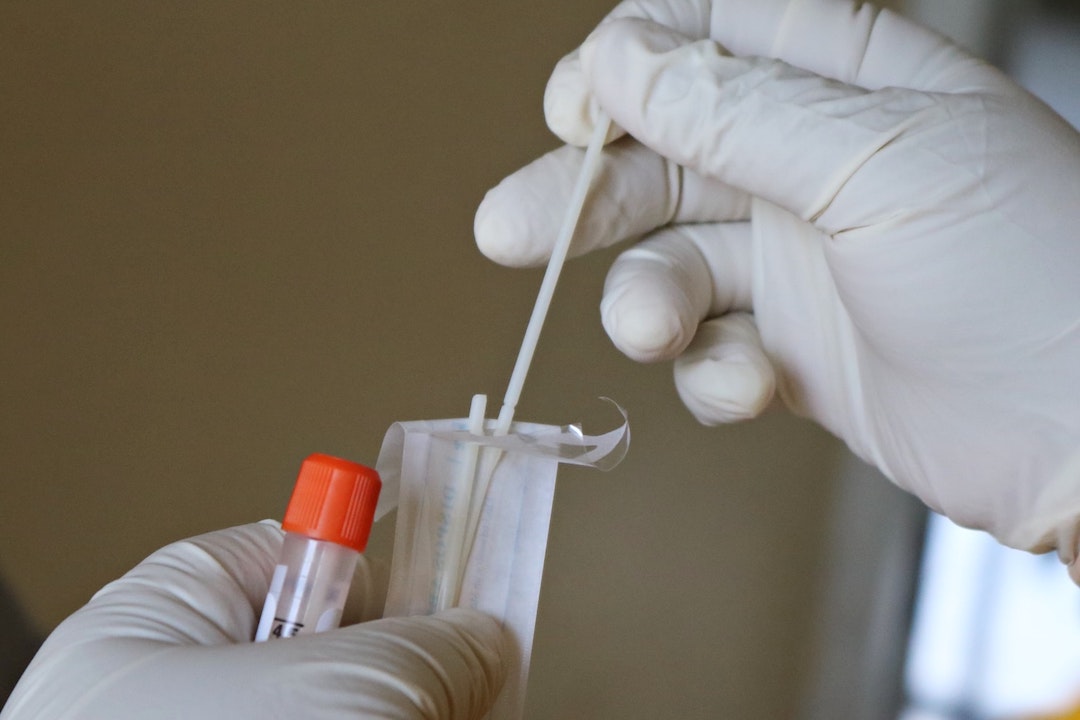A new, first-of-its kind report provides a framework for public health officials and community leaders in schools, businesses and other institutions on how to use Covid-19 screening test strategies to operate safely and prevent further spread of the virus. The report, A National Decision Point: Effective Testing and Screening for Covid-19, was produced by Duke University’s Margolis Center for Health Policy with support from The Rockefeller Foundation. Given the fluctuating prevalence levels of Covid-19 across the country, the report is a useful tool to help officials customize screening strategies of asymptomatic people to local circumstances and risk – with a particular focus on higher-risk populations and suppressing community spread.
It’s estimated that 30-60 percent of Covid-19 cases are transmitted from people carrying the virus without any symptoms, putting those around them at significant risk of infection and spread. The testing strategies recommend the best way to identify those infected so they can be isolated until they are no longer contagious, protecting others in the community.
“There has been a lot of confusion about whether and how to test people without symptoms to contain outbreaks,” said Dr. Mark McClellan, founding Director of the Duke-Margolis Center for Health Policy at Duke University. “As Covid tests become more widely available, it’s time to resolve some of the uncertainty, to help public health decision-makers understand how many tests will be needed and how to use them. Knowing how best to deploy Covid tests will help students return to school safely and protect people at high risk, such as nursing home residents and many essential workers.”
In addition to providing recommendations to accelerate the availability of these tests, including clearer regulations and advance purchase contracts, the report provides a toolkit for schools, nursing homes, and businesses to develop testing plans. As tests become more available, this framework can be adapted to local infection prevalence rates, as well as the unique qualities of each test and setting, to keep infections from spreading out of control.
“Six months into this pandemic, the United States is at a crucial moment,” said Dr. Rajiv J. Shah, President of The Rockefeller Foundation. “Despite months of planning, many schools and universities were unable to open this fall for in-person learning. Many families and businesses that muddled through the first six months of the pandemic are nearing breaking points. Closing the gap between the testing that’s available and what’s needed is a critical next step – and why we’re focused on helping make sure those new tests are deployed in the most effective manner possible, to the people who need them most.”
The research team used modeling techniques and local data on Covid-19 infections to conclude that, at present infection rates, a nationwide screening strategy would require about 200 million tests each month for students and staff at the nation’s primary and secondary schools, and residents and staff at nursing homes for them to open safely and in stages. There are currently fewer than 25 million Covid-19 tests reported monthly in the United States. However, the research team projects that this gap can close quickly, with a growing number of new rapid and inexpensive tests expected to enter the market over the next few months that could go a long way toward filling this gap – allowing routine testing of a growing proportion high-risk people who have not shown any signs of infection.
“With a host of new tests arriving soon, the country is on track to achieving the paradigm shift that we called for in the National Covid-19 Testing and Tracing Action Plan this summer,” said Dr. Jonathan “Jono” D. Quick, Managing Director for Response, Preparedness, and Prevention at The Rockefeller Foundation. “This paper offers the most concrete, specific, and localizable guidance to date to help determine the intensity of asymptomatic screening testing, along with the types of tests needed depending on the local prevalence of infections and the needs of the organizations doing the testing.”
“The key to responding to any epidemic is learning from the data that you have. Smart testing is picking the right test for the right person at the right time and performing it often enough to act to stop transmission. This determination must be done understanding a community’s prevalence rate.” said Mara G. Aspinall, Co-Founder, Professor of Practice in Biomedical Diagnostics, Arizona State University’s College of Health Solutions. “Complacency is our biggest enemy. Even with the potential of a vaccine, testing will remain an essential tool for keeping our communities open. We must do everything we can to ensure that there is a clear commitment from manufacturers to ramp up test production.”
Sample of Findings:
A Risk-based Testing Framework:
The report lays out considerations for developing a screening testing plan in schools and long-term care facilities that should be adjusted according to local Covid-19 prevalence and other setting-specific factors (e.g., the high risk for adverse outcomes that nursing home residents face).
For example, if a school district sits in a county with high local prevalence (>25 daily new cases per 100,000 people) then that district is likely in the “red” risk category. In this situation, administrators may decide to only invite teachers and staff to return to school under strict mitigation measures and require that they be tested once every two weeks. As the county does more testing, and prevalence declines to the orange risk category (10-25 daily new cases per 100,000 people), and then to yellow (1-10 new cases per 100,000 people), fewer tests will be needed to prevent uncontrolled spread.
When the county reaches the yellow risk category (1-10 daily new cases per 100,000 people), school administrators may decide to invite all students to return to in-person school and test staff and students once every two weeks.
This report can be used as a tool to help administrators determine their district’s risk category, estimate the right number of screening tests, and the frequency with which those tests should be done. Based on this framework and further input from experts, The Rockefeller Foundation is working with state and local governments to develop and assess specific testing protocols tailored to a range of local needs and circumstances.
Tail of Two Counties: Schuyler, New York & Polk, Georgia:
In an area like Schuyler County, N.Y., which had a low prevalence of Covid-19 infections at the end of August, a protocol using some of the new tests for 1000 people is estimated to return approximately 30 false positive results and one true positive. In a place like Polk County, Ga., however, which had a high background rate of infections in late August, that same test would uncover 39 real cases of Covid-19 for every 29 false positives. The report also describes how to address these presumptive positives, for example through isolation or limited use of very accurate laboratory tests to confirm the test results, as part of screening and containment strategy.
A test that might be more expensive but with better specificity – that is, less likely to incorrectly identify people without infection – would return just five false positives for every real infection in Schuyler County, N.Y., and 39 real cases along with five false ones in Polk County, Ga.
Every testing plan must take account of the accuracy of the tests and how such test characteristics play out in different parts of the country. Such differences can dramatically change the number and kind of tests needed to control outbreaks. The report describes how to accelerate evidence on how the new tests actually work in practice, which will help improve the impact and the efficiency of testing strategies as experience with testing accumulates.
Tailoring Quantity of Tests to Match the Level of the Covid-19 Spread:
The researchers estimate that 66 million tests would be needed to protect just 8 million of the country’s 80 million essential workers residing in high prevalence, high-risk settings where twice weekly screening would be appropriate.
But that same number of workers living in a low-prevalence area where testing could be done every other week would need just 16.5 million tests each month to keep them safe.
Later this fall, the research team will release testing protocols for K-12 schools and long-term care facilities. In collaboration with The Rockefeller Foundation, the research team will work with a small cohort of school districts in several cities to co-develop the guidelines. These protocols will be based on the considerations outlined in this report. They’ll also include real-world examples of the challenges that administrators, teachers, parents, and public health officials face when using testing as part of a reopening strategy. Most importantly, they’ll include the real-world solutions and lessons learned that schools across the nation can draw from to more safely reopen and stay open.










